Diets on a rocket are very different from the terrestrial ones, and so its respective packaging. Due to the atmospheric conditions we find in the space, products have to be designed to allow a comfortable and practical stay. Packaging is supposed to contain leftovers and not leave crumps floating in the cabin, as it may damage the equipment or disturb the astronauts. It is also needed to be suitable for preserving food for long periods. Do you think these are exorbitant demands?
In this post we will see what type of packaging NASA astronauts used in some space missions such as Mercury or Gemini.
- Vacuum-packed lyophilization
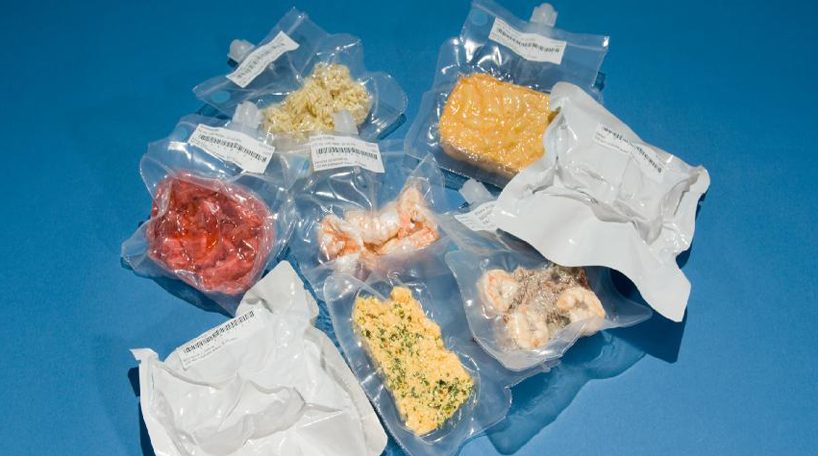
This conservation process, also called freeze dehydration, allowed to preserve the basic aspects of a food such as taste or aroma. To achieve this, the product was frozen at low temperature to avoid ice crystals. The items were vacuum packed in a four-layer laminated container with a water valve at one end. One of its advantages of lyophilization is that food could be kept at room temperature for long periods of time (from 9 months to 5 years).
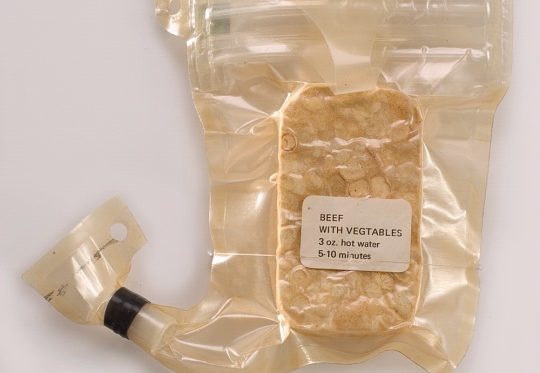
This food package contained compressed dried meat with vegetables. It was necessary to rehydrate with a hot water gun during the minutes indicated on the package to consume it. Soups, coffee, meats, prepared meals, vegetables were usually packed with this method. As a curiosity, the first time solid food was eaten in space was on the Gemini 3 mission.
- Vacuum-packed natural foods
We can also find this type of packaging at a regular supermarket. This conservation system is based on removing all the air inside the container. If done properly, the residual oxygen must be less than 1%. The goal is to achieve an air-free atmosphere to increase the shelf life of the food inside.
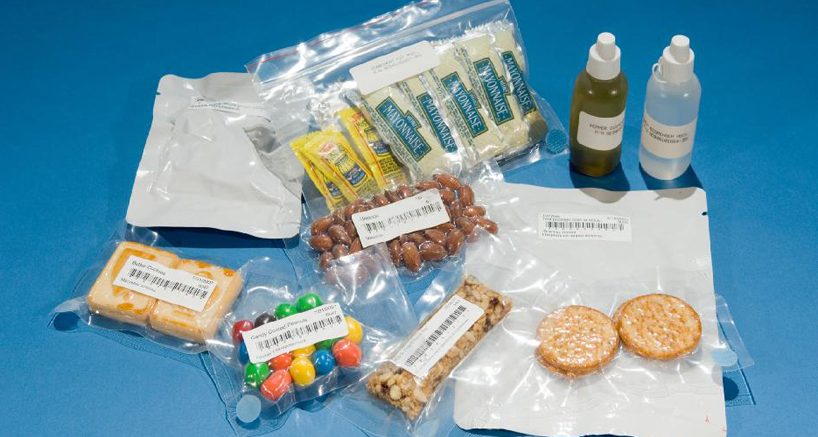
In this example we can see different vacuum-packed bags. Not frozen or dehydrated, but packed naturally. In this food package there are also salad dressings, cookies, nuts and sauces sachets such as mayonnaise or mustard.
- Let’s eat!
How astronauts managed the mentioned products and packages?
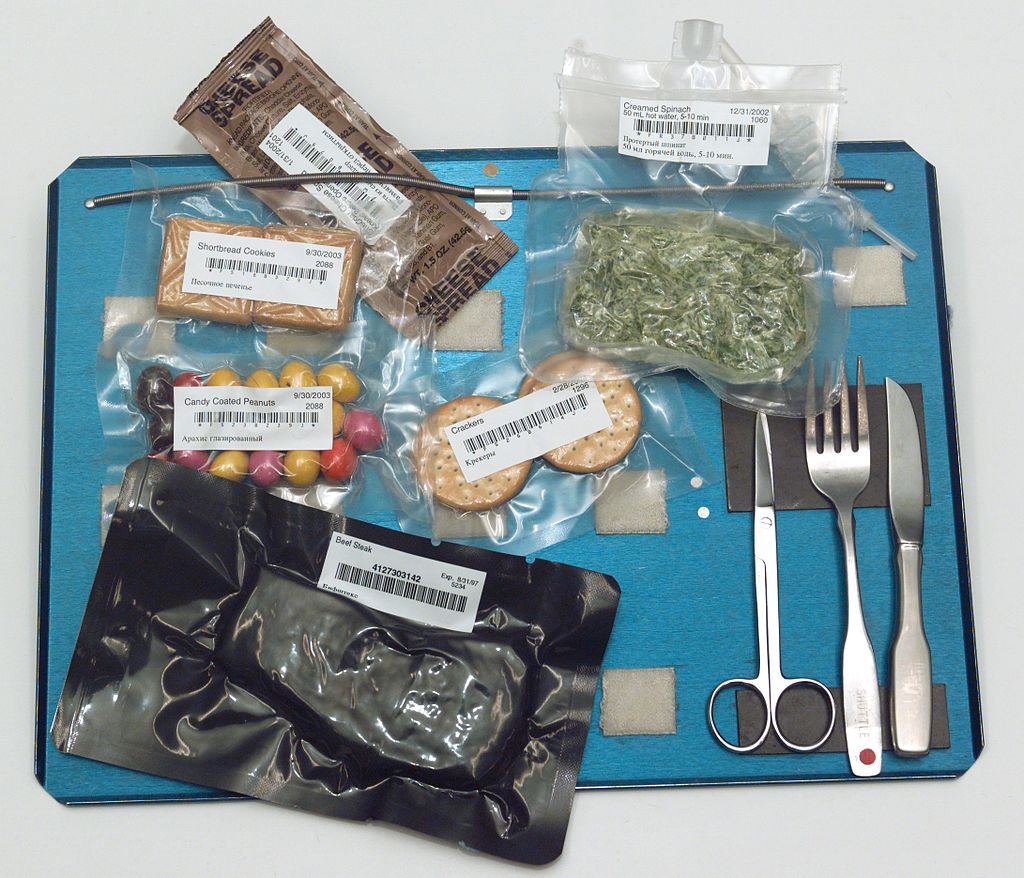
This was used in the International Space Station. As we can see, there are different vacuum-packed products, such as cookies or candies, and other dehydrated products like creamed spinach . All of them are hooked to the small placemat through sticky systems. On the other hand, the cutlery is fastened with magnets so that it does not float through the cabin space and cause an incident.
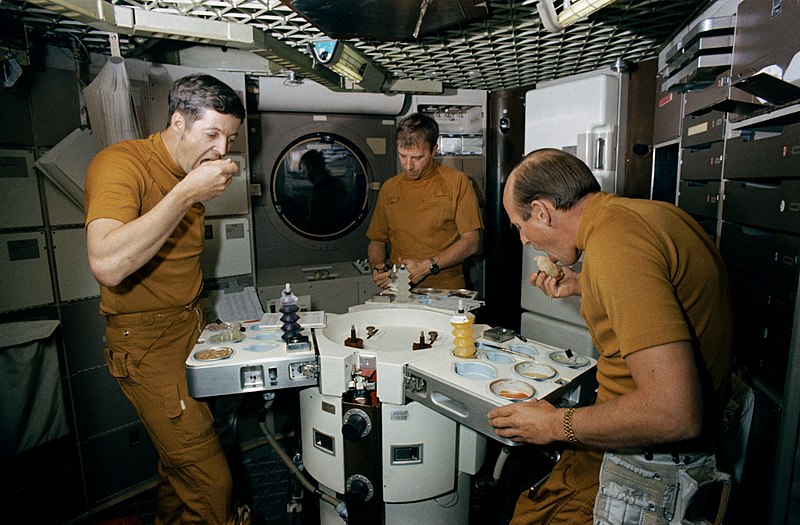
An important advance in the quality and variety of space food occurred during the Skylab Program, a space mission after Apollo. The space station had a kitchen where astronauts could cook and eat food of their choice. Instead of being rehydrated, foods packaged in aluminum cans or plastic bags were heated in containers before consumption.
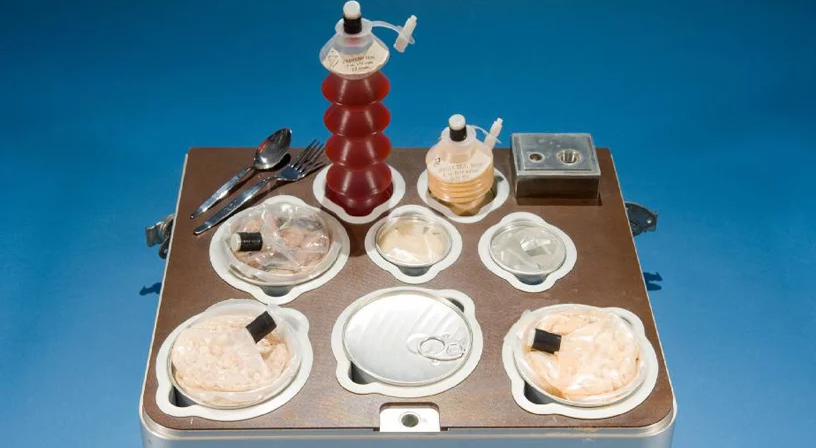
This is the NASA tray used in the Skylab project. Products are placed in containers for a much better comfort on board since the last version. We can also see a juice stored in a flexible container with an accordion-like system.
Thanks to technology, preservation methods have evolved in these 50 years. Crews have gone from feeding seeds and crackers to taste almost gourmet menus. Now, there are space products that meet an average of basic nutritional needs and are appetizing at the same time. What will space packaging be like in a few years?
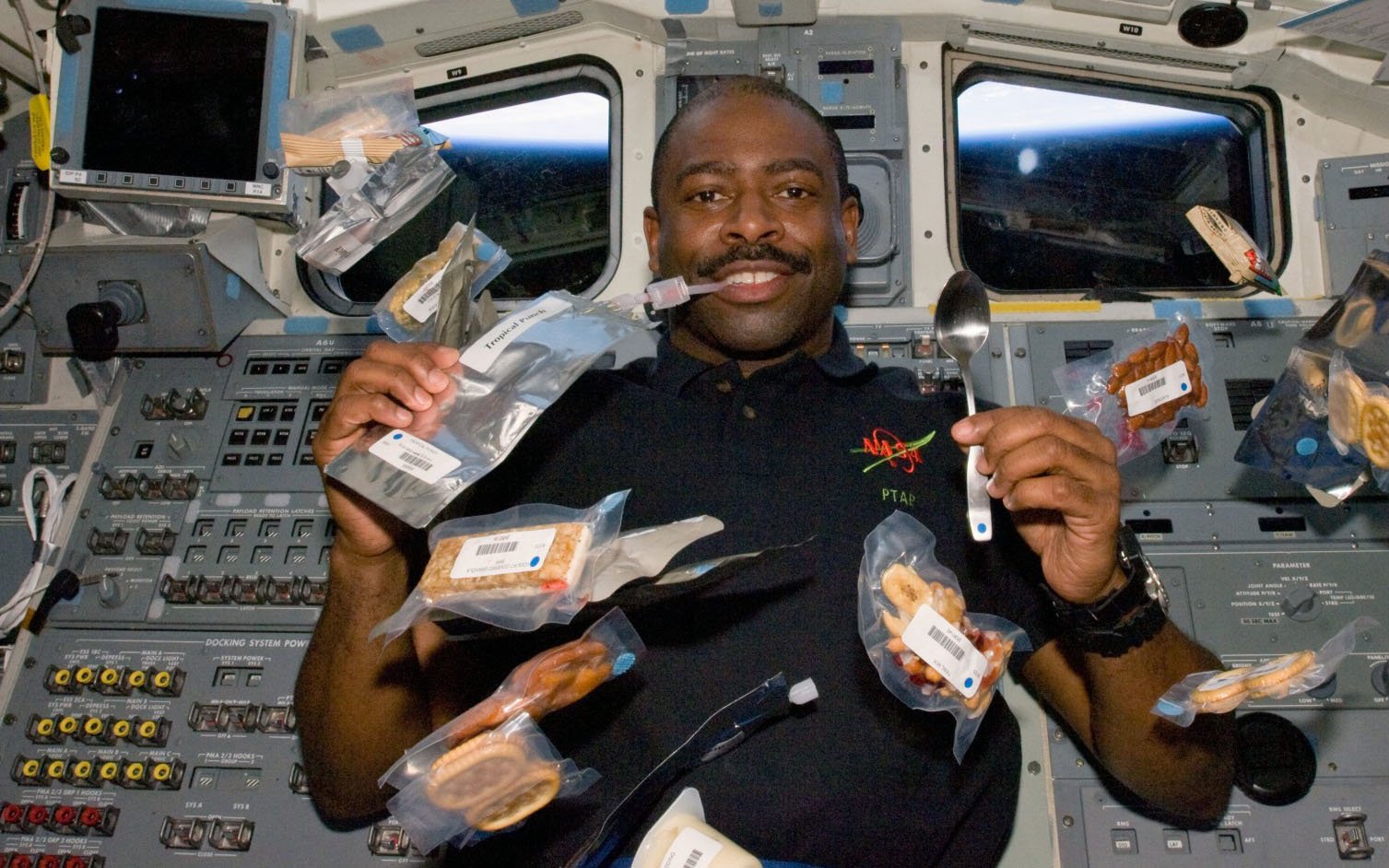

2 Responses to Space Packaging